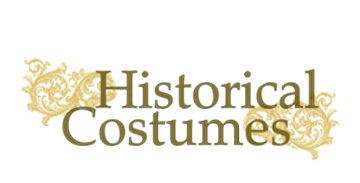
1885's Victorian Bustle Day Costume
Description
Red velvet cuirass bodice and four gore skirt, black and red overskirt. Decorated black top hat and vintage muff.
Inspiration
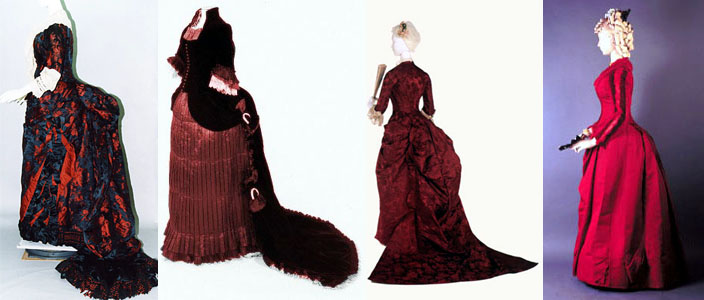
Original Red Bustle gowns, from left to right: 1875, 1880, 1883 and 1883-1889
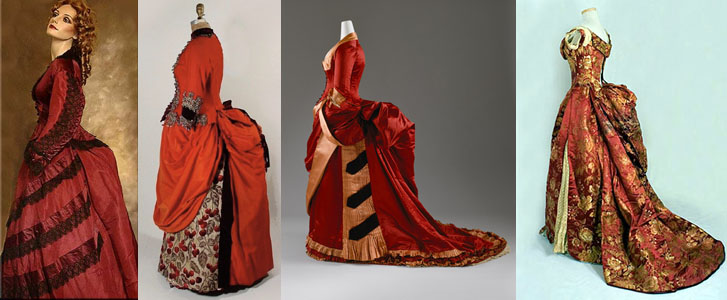
Original Red Bustle gowns, from left to right: 1872-74, 1880, 1884-86 and 1885 (by Worth)
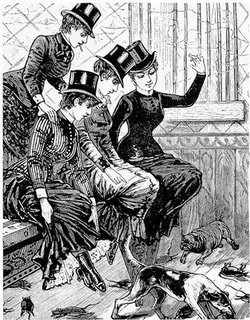
Women in a ratpit, wearing masculine styled outfits and one of them is even smoking.
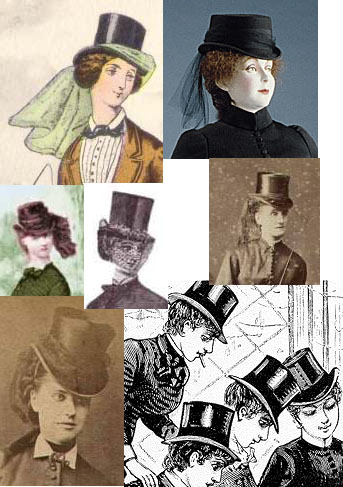
Victorian ladies wearing top hats
Patterns used
Truly Victorian #362, 1884's Wash overskirt
Truly Victorian #261, 1885's Four gore skirt.
Truly Victorian,#460, 1885's Cuirass Bodice.
More information
The colors of the late victorian era where influenced by the introduction of the synthetic dyes. In 1856 William Henry Perkin discovered the first synthetic dye, Mauviene, a purple dye. Later it became possible to create other strong, bright synthetic colors. In the 1880's the use of vivid colors as deep red, peacock blue, bright apple green, royal blue, purple, mandarin, sea green became very popular, often used in a combination with another strong color. I was inspired to use black after seeing a picture of an original victorian red and black bustle gown
In the first bustle period (ca. 1870-75) ladies costumes had been made from lighter fabrics as taffeta and cotton, during the second bustle period (ca.1883-1891) heavier fabrics like velvet, heavy satins and brocades where used. The shape of the bustle became "harder" more exaggerated in shape. A bustle, also called a queue de Paris, is a type of framework used to expand the fullness or support the drapery of the back of a woman's dress. This framework could be a pillow filled with horsehair or a spring steel/wire construction. My bustle is a wire construction attached to my petticoat, covered by flounces, like Truly Victorian pattern #101. It's based upon an actual garment from Harper's Bazar magazine. It was popular conceit that these bustle could support an entire tea service.
The skirts from the second bustle period had less draperies, what drapery there was, formed a small apron at the front of the dress. This style is visible in my red taffeta with black lace overlay and a black satin front panel overskirt. It has the fullness, a bouffant, at the back and is made with the Truly Victorian pattern #362, 1884's wash overskirt. The red velvet 1885's four gore skirt that I made with Truly Victorian pattern #261 also has the slender line typical for the mid 1880's. The fabric at the front is sewn flat to the waistband in the front and gathered in the back to make space for the bustle.
The tailoring of the jacket or bodice became "sharper" more tailored. The cuirass bodice with it's almost corset like appearance is a good example of this kind of bodice/jacket. The pattern I used for my cuirass bodice is from Truly Victorian, #460, 1885's Cuirass Bodice.
Costume made in 2008, worn in 2008 & 2009


